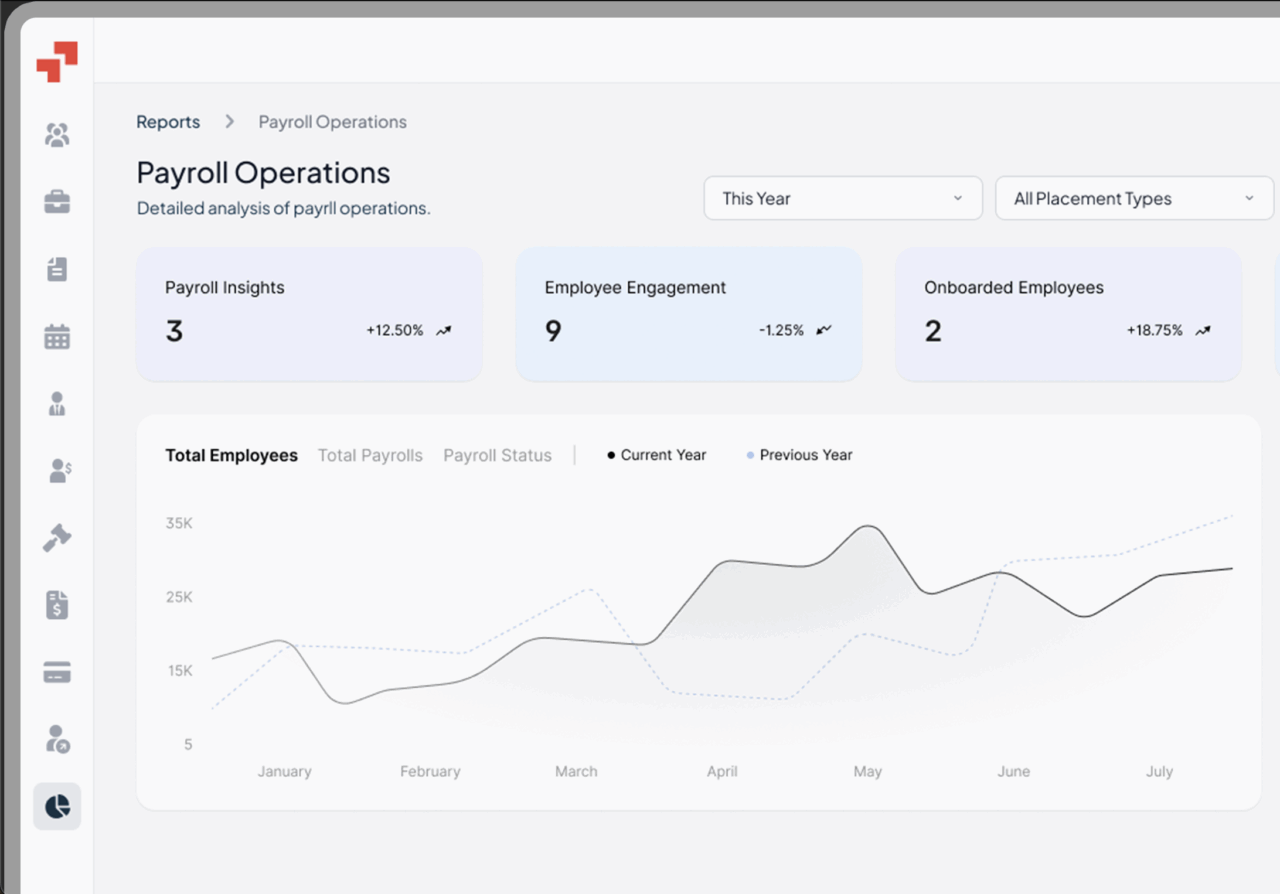Global Workforce GlossaryEmployment Status
What is Employment Status?
Employment status describes the legal relationship between a worker and organization, determining rights, benefits, and obligations. Employment status affects employment rights and legal rights, including access to all the employment protections provided by law.
For executives building global teams, it’s your strategic compass for speed to market, cost structure, and legal risk exposure.
Employment status serves as the foundation for payroll processing, tax obligations, and regulatory compliance. According to the International Labour Organization, proper employment classification ensures workers receive appropriate employment protections while enabling legal business operations.
Table of Contents
- What is Direct Compensation?
- What are the Types of Direct Compensation?
- Direct compensation plan
- What are the Benefits of Direct Compensation?
- What are the Components of Direct Compensation
- What are the 3 Main Elements of Direct Compensation?
- What is the Difference between Direct Compensation and Indirect Compensation?
- What is Indirect Compensation for Employees?
- How does Direct Compensation Impact Business?
- The Importance of Offering Competitive Direct Compensation
- Examples of Direct Compensation
- Practical Example: Direct Compensation in Action
- How PamGro Helps with Direct Compensation
What are the Types of Employment Status?
The primary employment status categories create distinct legal and operational frameworks: employees, independent contractors, and workers (in jurisdictions recognising this middle category).
- Employee – Employees work under direct supervision with comprehensive benefits and job security. A full-time employee or employees typically work for 30 or more hours per week and are eligible for a secure employment package, including benefits such as health insurance and paid leave.
- Independent Contractors – An individual who works for themselves or runs their own business. Also sometimes referred to as self employed workers, operate as separate businesses, controlling work methods and using their own tools. A self employed person operates their own business, manages their own business risks, and is distinct from employees.
- Casual employment – Casual employment refers to a flexible and irregular working arrangement where employees are hired without guaranteed hours or a fixed schedule. The nature of work is often sporadic or on-demand, depending on business needs. Common types of casual workers include freelancers, agency workers, zero-hour contract workers, and other temporary hires.Casual workers are not obligated to accept every assignment, but once they agree to a task, they must complete it according to the agreed terms. They cannot subcontract or delegate their work. While they enjoy flexibility, casual employees typically lack job security and may have limited access to benefits compared to permanent staff.
- Seasonal Employment: Seasonal employment refers to temporary work arrangements that occur during specific times of the year or peak business periods. Common industries that rely on seasonal employees include retail (holiday sales periods), agriculture (planting and harvest seasons), and hospitality (tourist seasons).
Seasonal workers are hired for fixed durations and often do not receive the same benefits as full-time employees. However, they remain entitled to core labor protections such as minimum wage, overtime pay, and workplace safety standard. - Temporary Employment: Temporary employment involves hiring individuals for short-term roles or defined projects. Employers may hire temporary workers directly or through staffing and recruitment agencies. These roles are often used to cover employee absences, manage project-based workloads, or handle seasonal demand spikes. Temporary employees are typically paid hourly and may or may not receive employment benefits, depending on their contract terms and local labor laws.
Understanding these distinctions prevents costly misclassification errors that can trigger audits, penalties, and operational disruptions across your international footprint.
How Does Employment Status Differ Around the Globe?
Global employment classifications create a complex matrix that can make or break international expansion strategies. The International Labour Organisation provides classifications that distinguish between self employed individuals, independent workers, and dependent workers for labour market analysis.
Different countries, including European countries, have unique legal guidelines, tax regulations, and federal laws that affect employment status classification. Understanding tax responsibilities and tax purposes is essential for legal compliance when managing employment status across borders.
Employment Status in the United States
The U.S. operates on a binary system: employees versus independent contractors. The U.S. Bureau of Labor Statistics tracks employment by major industry sectors, providing frameworks that help businesses understand classification requirements. These employment status types are crucial because employment status determines eligibility for minimum wage, overtime pay, health insurance, retirement plans, and other employment rights. Companies with 50 or more employees must offer health insurance to full-time staff under federal law.
The IRS uses a three-factor test examining behavioral control, financial control, and relationship type. The right employment status ensures employees receive paid holiday, statutory sick pay, and statutory redundancy pay, as well as all the protections provided by law.
Employment status affects job expectations, the working relationship, and employment security, with employees generally having more employment security and access to unemployment benefits. Misclassification penalties can reach 100% of unpaid taxes plus interest.
Employment Status in India
India recognises regular employees, contract workers, casual labourers, and self-employed categories under complex state-varying labour laws. Many self employed contractors, as well as contract workers, typically submit invoices for their services rather than receiving a regular wage. The NSSO classifies workers by usual status, current weekly status, and current daily status. Recent data shows 42.86% work in agriculture, with industry and services splitting the remainder.
Employment Status in Other Countries
European Union countries typically recognise employees, workers, and self-employed categories with distinct rights frameworks. In these countries, employers’ responsibilities and what an employer owes to employees, such as paid holiday entitlement, statutory redundancy pay, and other employment rights, are strictly regulated and vary depending on the employment status.
Other key markets maintain specific requirements: the UK’s post-Brexit system, Germany’s strict Arbeitnehmer criteria, Singapore’s control tests, and Canada’s layered federal-provincial jurisdictions.
Which Type of Employment Status Should You Hire?
The optimal employment status depends on strategic objectives, timeline, and risk tolerance. Think of this decision as choosing the right vehicle for your journey; each offers different speeds, costs, and capabilities.
For hiring managers, it is crucial to understand employment status and the different employment statuses available to ensure hiring strategies align with business needs and legal compliance.
Understanding employment status types also helps set clear job expectations and ensures proper classification for legal rights, benefits, and taxation.
Choose employees for: Core capabilities requiring deep integration, permanent market presence, maximum control over work, IP protection, and long-term talent investment.
Consider contractors for: Contractor employment status is common for seasonal workers and zero-hour contract workers. Project-based work, temporary employees with specialised expertise, market testing, fluctuating workloads, and complex employment law jurisdictions.
Evaluate EOR services for: Hiring employees without local entities, rapid market entry, and compliance management.
Research shows employees cost 25-40% more than contractors, including the same benefits and taxes, though contractors may charge premium rates.
When Should You Consider Changing Employment Status?
Employment status changes represent strategic inflexion points that can accelerate growth or mitigate emerging risks. Smart leaders recognise transition signals and act proactively.
Upgrade contractors to employees when: Project work becomes operational, integration proves critical, a written contract is established, market presence shifts to permanent, or talent retention becomes strategic. Employees are entitled to benefits such as paid leave, which contractors typically do not receive.
Transition employees to contractors if: Business models shift toward projects, geographic focus changes, or regulatory advantages emerge.
Warning signals: Contractors working like employees, government inquiries, benefit eligibility questions, or high integration levels requiring immediate attention.
Successful transitions require careful planning, clear service breaks, new contracts facilitated by staffing agencies , and operational changes demonstrating true relationship types.
Employment Status Example
TechFlow, a Series B SaaS company, needed rapid European expansion without entity establishment costs. Their strategic employment decisions:
Portugal (EOR Employee): Hired a senior developer through Employer of Record for $8,200/month (salary + benefits + fees), providing the employee with a secure employment package as part of their benefits. Result: Full compliance with long-term retention for European market development.
India (Contractor-to-Employee): Started with $4,000/month contractor, converted to $5,500/month employee after proving fit. Result: Risk-mitigated talent acquisition with upside retention.
Singapore (Specialised Contractor): Engaged AI specialist at $12,000/month for market intelligence. Result: Immediate expertise access without permanent establishment triggers.
Outcomes: 340% European revenue increase, 24/7 support reducing churn by 23%, and $215K savings versus entity establishment. Mixed employment status strategy enabled market testing, talent access, and operational efficiency directly supporting successful Series C fundraising.
FAQs
How Can I Check Employment Status in General?
Employment status verification requires systematic evaluation across legal, operational, and financial dimensions. Create standardised assessments examining control tests, integration levels, economic reality, and relationship documentation. These assessments should be based on current legal guidelines to ensure legal compliance.
Regular audits prevent classification drift; quarterly reviews focus on integration levels and control mechanisms. Professional legal consultation becomes essential for unclear classifications or new jurisdictions.
What Does Employment Status 1099 Mean?
1099 employment status refers to the U.S. independent contractor classification, named after the IRS tax form used to report contractor payments. The 1099 classification is important for tax purposes, as it determines how income is reported and taxed. This creates business-to-business relationships rather than employer-employee arrangements.
1099 status creates business-to-business relationships rather than employer-employee arrangements. Contractors handle taxes, benefits, and business expenses while maintaining work autonomy.
Strategic advantages: Reduced administrative burden, lower compensation costs, specialised expertise access, workforce flexibility, and decreased employment law liability.
Critical compliance: Contractors must control work methods, receive project-based payment, use their own equipment, maintain multiple clients, and operate under clear independent agreements. Common mistakes include treating 1099 workers like employees through supervision, not allowing them to manage their own taxes, location requirements, or operational integration.
What Does Inactive Employee Status Mean?
Inactive employee status describes workers with uncertain job status remaining in company systems without current work or regular compensation. This classification requires careful management to avoid compliance issues.
Inactive employee status covers workers remaining in systems without current work or regular compensation. Common scenarios include approved leave, seasonal workers, temporary suspensions, role transitions, and retained consultants.
Hire the Best Talent, Anywhere






